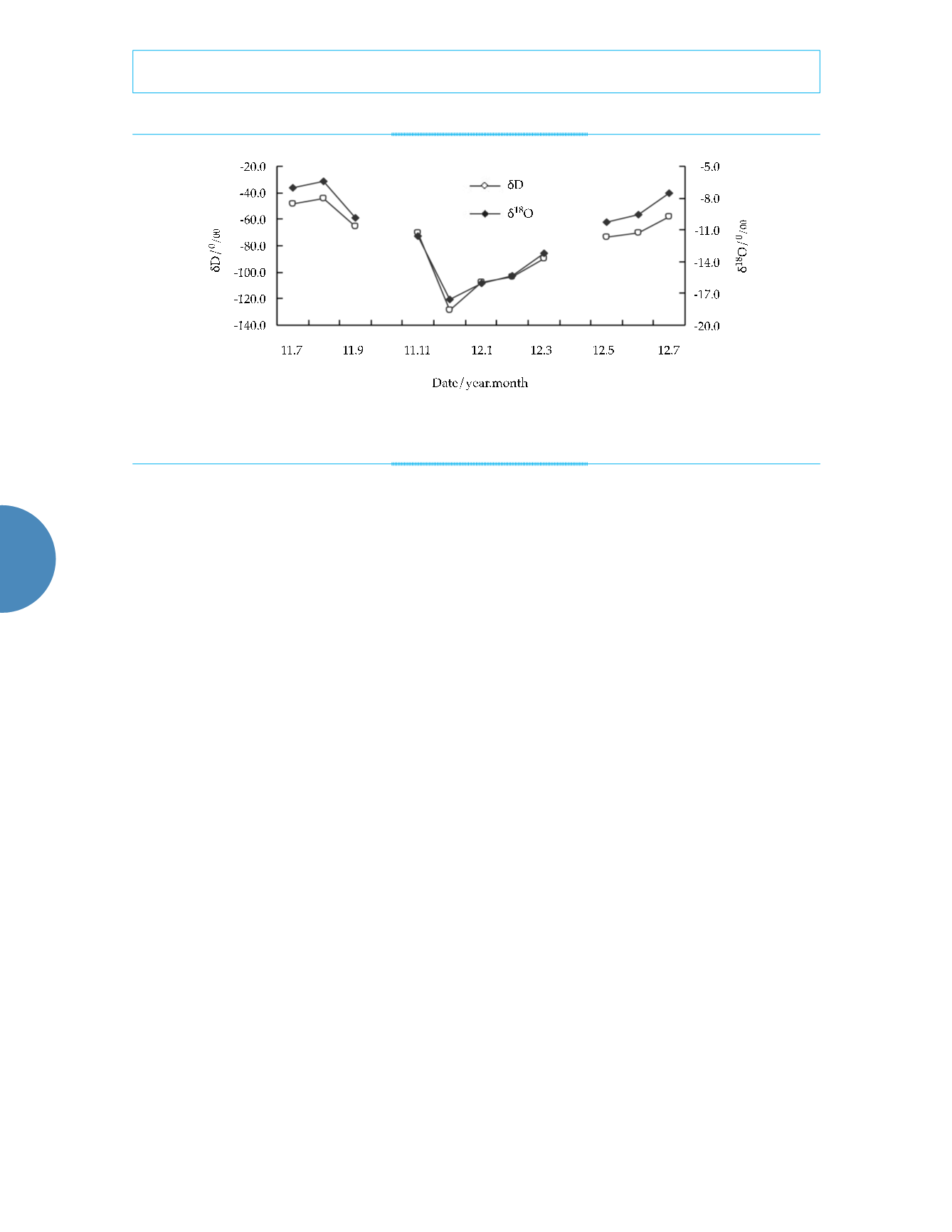
110
Tecnología y Ciencias del Agua
, vol. VIII, núm. 2, marzo-abril de 2017, pp. 105-115
Wang
et al
.,
Research on the hydrologic cycle characteristics using stable isotopes of oxygen and hydrogen in the Jinxiuchuan Basin
•
ISSN 2007-2422
figure 3. The results indicated that
δ
D and
δ
18
O
have an obvious change with the season, and
the maximum values of
δ
D and
δ
18
O occurred
in July and August (wet season) were -35.6%
and 5.3%, respectively; and their average val-
ues were -43.8‰ and -7.6‰, respectively. The
minimum
δ
D and
δ
18
O occurred in November
and December (the dry season) were -128.3‰
and -17.5‰, respectively, and the average were
-122.6‰ and -15.3‰, respectively.
The isotope values shown in figure 3 has
great difference between summer and winter,
and it indicated the precipitation was controlled
by different water sources. The basin has a
typical monsoon climate and is affected by the
warm moist air flows from the sea, and the rainy
days and precipitation amount are mainly con-
centrated in summer. It results in the enrichment
of heavier isotopes, therefore, the values of
δ
D
and
δ
18
O become larger. However, the polar con-
tinental air mass is prevailing in winter, and the
weather is dry and wintry. As the vapor pres-
sure of isotope is inversely proportional to the
mass number, heavy isotopes were condensed
preferentially with transported of water vapor,
and it led to
δ
D and
δ
18
O dilution in precipita-
tion. The reason eventually made
δ
D and
δ
18
O
decrescent in winter precipitation. Precipitation
was invalid in April and October for analyzing
isotopes. In history, the rainfall amount of April
and October is little in the Jinxiuchuan Basin.
Results from figure 3 indicated that sampling
sites are the most representative.
Meteoric water line of the Jinxiuchuan
Basin
The relationship between
δ
D and
δ
18
O of pre-
cipitation is generally referred to the meteoric
water line (MWL), which is of great significance
to study the isotope changes in the water cycle
(Li, Li, & Shen, 2010). Craig (1961) initially
put forward for the global meteoric water line
(GMWL) equation:
δ
D = 8
δ
18
O + 10‰, the aver-
age value of GMWL is 10‰. When the values
are less than 10‰, the imbalanced degree of the
gas and liquid isotopic fractionation has a big
impact on the formation of clouds. If it is less
than 10‰, the evaporation plays a significant
role during the precipitation process. According
to the 107 rainfall samples of isotopes, Zheng
Shuhui et al. (1983) obtained the meteoric water
line in China(CMWL):
δ
(D) = 7.9
δ
18
O + 8.2‰.
The local meteoric water line (LMWL) equation
is as follows:
δ
D = 7.16
δ
18
O + 4.35‰,
R
2
= 0.92.
The LMWL of the Jinxiuchuan Basin is close
to GMWL and CMWL, as shown in figure 4.
But the slope and intercept of the former line
are lower than those of the latter, due to the im-
pact of evaporation. The
δ
D and
δ
18
O values of
Figure 3. Changes of
δ
D and
δ
18O in precipitation with time from 2011.7 to 2012.7.


